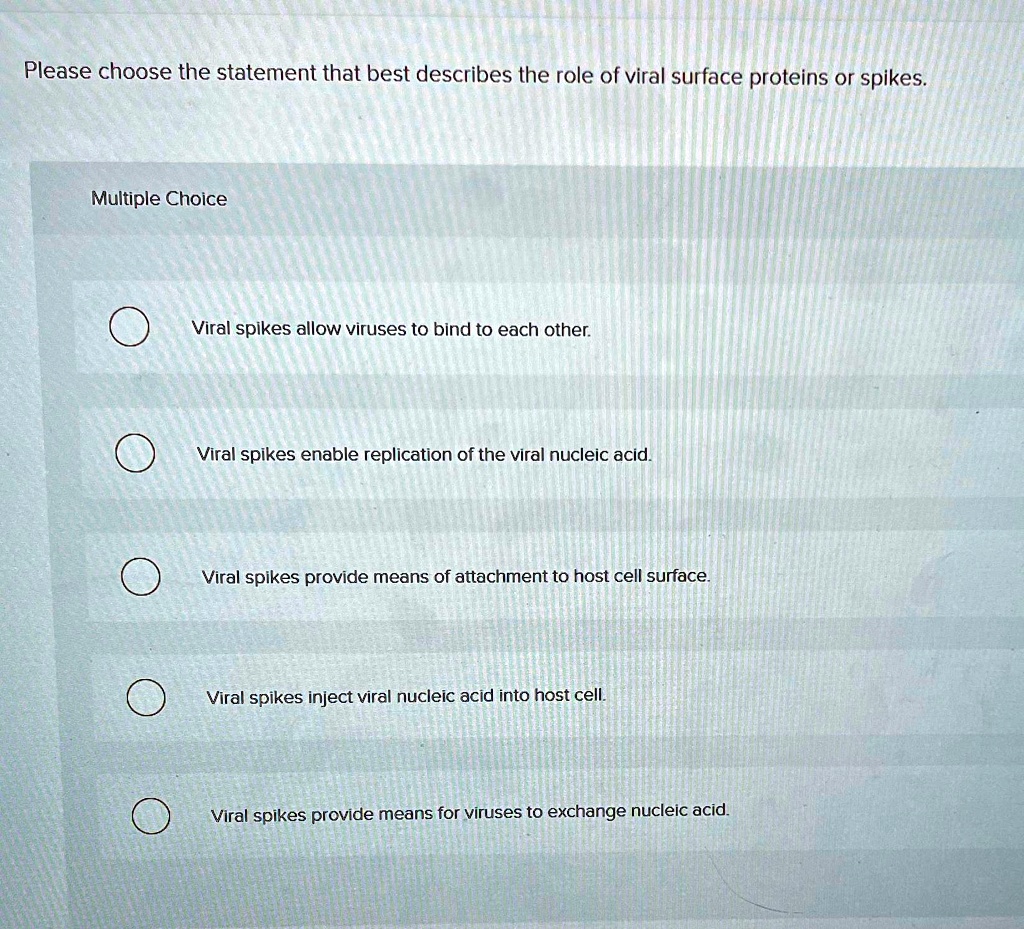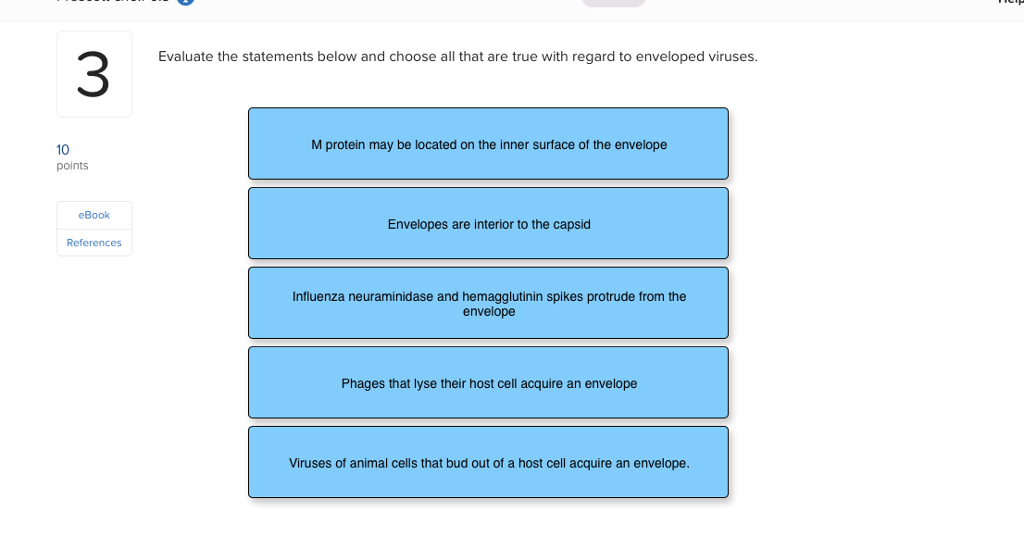Which Of The Following Statements About Viral Spikes Is False

A recent online debate has ignited over the accuracy of information surrounding viral spikes, crucial structures on the surface of viruses like SARS-CoV-2, the virus that causes COVID-19. Fueled by misinformation and varying interpretations of scientific data, a key question is circulating: Which of the following statements about viral spikes is false?
The answer to this question and the surrounding discourse highlights the critical need for clear and accurate science communication, especially in times of public health crises. Understanding the true nature of viral spikes is essential for comprehending how viruses infect cells, how vaccines work, and how effective different treatments might be.
Understanding Viral Spikes
Viral spikes, also known as spike proteins, are projections on the surface of viruses that allow them to attach to and enter host cells. For SARS-CoV-2, the spike protein binds to the ACE2 receptor on human cells, initiating the infection process. This binding mechanism is a primary target for vaccines and antiviral therapies.
Scientists use the spike protein structure to develop countermeasures. Antibodies generated by vaccines, for instance, specifically target and neutralize the spike protein, preventing the virus from entering cells.
Common Misconceptions
One prevalent misconception is that viral spikes are purely harmful and only cause damage. While the spike protein facilitates infection, it is also the key to developing effective vaccines and therapies.
Another misconception revolves around the stability and mutation of spike proteins. They are subject to mutations, leading to the emergence of variants with altered transmissibility or immune evasion properties. These mutations are the driving force behind updated vaccine formulations.
Dissecting the False Statement
Identifying the false statement about viral spikes requires careful consideration of the current scientific consensus. Often, misinformation stems from oversimplifications or misinterpretations of complex data.
Statements like "Viral spikes are unchanging structures" or "Spike proteins are entirely man-made" are demonstrably false based on established scientific evidence. The Centers for Disease Control and Prevention (CDC) and the World Health Organization (WHO) provide reliable information refuting such claims.
A common tactic is to distort the purpose or function of spike proteins in vaccines. Vaccines utilize a modified, harmless version of the spike protein to trigger an immune response, protecting against future infection.
The Importance of Accurate Information
The spread of misinformation about viral spikes can have detrimental consequences, leading to vaccine hesitancy and undermining public health efforts. Trust in scientific institutions and healthcare professionals is crucial to combating misinformation.
It's essential to rely on reputable sources such as peer-reviewed scientific journals, government health agencies, and expert opinions. Fact-checking websites and scientific literacy initiatives also play a vital role.
Critical thinking and a healthy skepticism are important tools for navigating the complex landscape of scientific information. Questioning claims and seeking corroboration from multiple credible sources are recommended.
Impact and Societal Implications
The debate surrounding viral spikes highlights the broader challenge of communicating scientific information effectively. Public understanding of scientific concepts is essential for informed decision-making and public health preparedness.
Promoting scientific literacy and fostering a culture of evidence-based reasoning are crucial steps. Media outlets, educational institutions, and public health organizations must prioritize accurate and accessible science communication.
Addressing misinformation requires a multi-faceted approach that involves debunking false claims, promoting credible information, and building trust in scientific expertise. Open dialogue and respectful engagement are essential for bridging divides and fostering a shared understanding of complex scientific issues.
The ongoing evolution of viruses and the continuous refinement of scientific knowledge necessitate a commitment to lifelong learning. Staying informed about the latest scientific developments is crucial for adapting to new challenges and protecting public health.





![Which Of The Following Statements About Viral Spikes Is False [ANSWERED] 3 Determine whether the following statement is true or false](https://media.kunduz.com/media/sug-question-candidate/20231031153445964679-6133554.jpg?h=512)



![Which Of The Following Statements About Viral Spikes Is False [ANSWERED] Which of the following statements is false concerning the](https://media.kunduz.com/media/sug-question-candidate/20240216023341111030-3662771.jpg?h=512)
